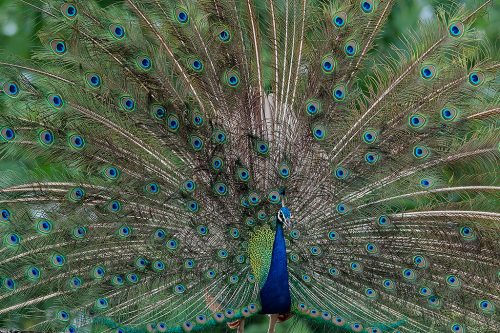The Evolution of Beauty is a compelling and insightful look at beauty in nature through the eyes of Richard O. Prum, the William Robertson Coe Professor of Ornithology at Yale. The book is Prum’s response to decades of research in the evolutionary sciences that have embraced Darwinian thought and theory of natural selection, while woefully ignoring Darwin’s theory of sexual selection. Through a lifetime of observing birds in nature and researching the evolution of ornamental beauty, Prum contends to revive the arbitrary sexual selection hypothesis, or as he calls it, “Beauty Happens.”
According to Prum, animals have subjective tastes and preferences and the agency to act upon them via mate choice. Prum compares adaptationists, who believe that all traits have evolved to provide a better chance of survival and communicate information about mate quality, to economic theorists, who expect actors in a free market to behave completely rationally and purposefully. “Of course,” Prum says, “Evolution, like markets, is spurred by the irrational and subjective choices of its actors.” He provides a motley of colorful examples from the bird world to support this hypothesis, like the evolution of the male peacock’s seemingly useless tail which may even be harmful to survival, but has nonetheless persisted because the ladies like it.
In the animal kingdom, it is often the female who chooses a mate among available males. Because of this, Prum’s argument also has a feminist flair. He describes how male and female ducks’ genitalia and the male bowerbird’s elaborate bower-building ritual might have evolved for the same purpose—to protect females from forced copulation. Prum even extends his hypothesis to the evolution of the female orgasm in great apes and the size and shape of the human penis, claiming that female sexual autonomy has led to their evolution—or, in his words, “Pleasure Happens.”
The Evolution of Beauty is interdisciplinary at its core, and Prum passionately comments on evolution from multiple perspectives. While the book has been well-received—the New York Times named it as one of the ten best books of 2017—Prum says the response from the scientific community has been mostly mute. “I’m perfectly happy to lose the battle and win the war,” he said, hoping his work will inspire further research recognizing aesthetic preference as a strong force in evolution.
On the whole, The Evolution of Beauty endures as a brilliant anthology of beauty and desire in the natural world, written in engaging prose that is vivid, graphic, and at times unexpectedly funny. Prum humorously and appropriately quotes Sean Hannity’s remarks on his research: “Don’t we really need to know about duck sex?” If you thought you, like Sean Hannity, didn’t care about the mating habits of ducks—or never gave them any thought at all—this book will make you strongly reevaluate your indifference.
References
[1] Interview with Richard O. Prum, PhD, Professor of Ornithology, Ecology and Evolutionary Biology at Yale University, interview on 02/02/18
[2] Darwin, F., (Ed), Letter to Asa Gray, dated 3 April 1860, The Life and Letters of Charles
Darwin, D. Appleton and Company, New York and London, Vol. 2, pp. 90–91, 1911
[3] Prum, R. O. (2017). The Evoltuion of Beauty: How Darwin’s Forgotten Theory of Mate
Choice Shapes the Animal World – and Us.

